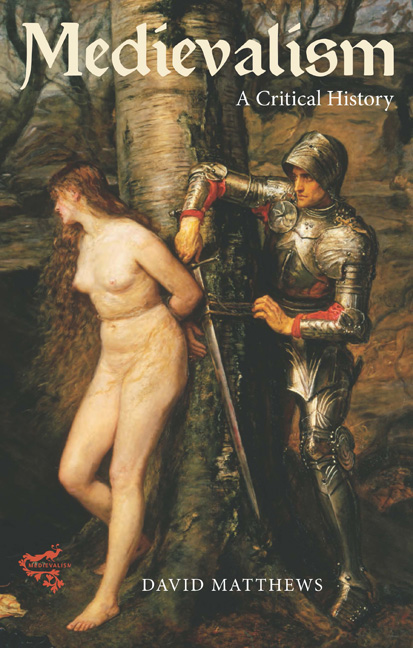Book contents
- Frontmatter
- Dedication
- Contents
- List of Illustrations
- Preface
- Acknowledgements
- Abbreviations
- Introduction
- I TAXONOMIES
- II TIME, SPACE, SELF, SOCIETY
- 2 “Welcome to the Current Middle Ages”: Asynchronous Medievalism
- 3 This Way to the Middle Ages: The Spaces of Medievalism
- 4 On Being Medieval: Medievalist Selves and Societies
- III HISTORY AND DISCIPLINE
- Conclusion Against a Synthesis: Medievalism, Cultural Studies, and Antidisciplinarity
- Afterword
- Appendix I The Survey of Reenactors
- Appendix II Key Moments in Medievalism
- Bibliography
- Index
3 - This Way to the Middle Ages: The Spaces of Medievalism
from II - TIME, SPACE, SELF, SOCIETY
- Frontmatter
- Dedication
- Contents
- List of Illustrations
- Preface
- Acknowledgements
- Abbreviations
- Introduction
- I TAXONOMIES
- II TIME, SPACE, SELF, SOCIETY
- 2 “Welcome to the Current Middle Ages”: Asynchronous Medievalism
- 3 This Way to the Middle Ages: The Spaces of Medievalism
- 4 On Being Medieval: Medievalist Selves and Societies
- III HISTORY AND DISCIPLINE
- Conclusion Against a Synthesis: Medievalism, Cultural Studies, and Antidisciplinarity
- Afterword
- Appendix I The Survey of Reenactors
- Appendix II Key Moments in Medievalism
- Bibliography
- Index
Summary
The dream vision encodes the impossibility of visiting the Middle Ages. When we stand, as tourists, before the cathedral of Notre Dame in Paris, we are encouraged to think that what we are doing is visiting the Middle Ages. We go to a medieval cathedral of the gothic era: “[T]he illusion of permanence and connectedness with the past is almost perfect,” as Richard Utz writes. In fact this is almost as illusory as the travels undertaken by William Morris's melancholic dreamers. When we walk in that vast nave, we move amid a palimpsest of all historical eras. We may go down into the crypt, where the origins of a church from earliest Christian times can be seen; we may go up the tower and admire the gargoyles, many of which were added in a nineteenth-century restoration after revolutionary desecration; we can attempt to distinguish, among the sculptures, those that are medieval from those that replace originals destroyed in the Revolution. Notre Dame, like all such places, exists in a historical continuum. But since the nineteenth century, we have been encouraged to think of it as a gothic church, the “noblest of all,” as Ruskin called it. Evidently, gothic is its primary architectural idiom. But it can only be maintained in that idiom by extensive renovation in modern times.
Similarly, the Old Town of Warsaw was, before World War II, a palimpsestic ensemble of buildings. Established in the thirteenth century, the Old Town features a range of buildings of all periods from the Gothic through to the Baroque. It is now a UNESCO World Heritage site. Yet these buildings are almost entirely reconstructions. In 1944, in reprisal for the Warsaw Uprising, Nazi troops destroyed 85 per cent of the Old Town. After the war, the Poles set about rebuilding and over two decades, reconstructed it. So today the late medieval cathedral of St John offers a more extreme example of renovation than Notre Dame, as it has been almost entirely rebuilt.
- Type
- Chapter
- Information
- MedievalismA Critical History, pp. 65 - 91Publisher: Boydell & BrewerPrint publication year: 2015



